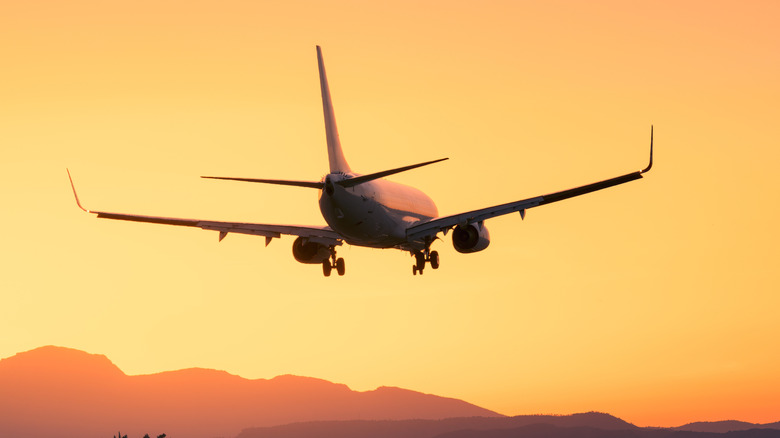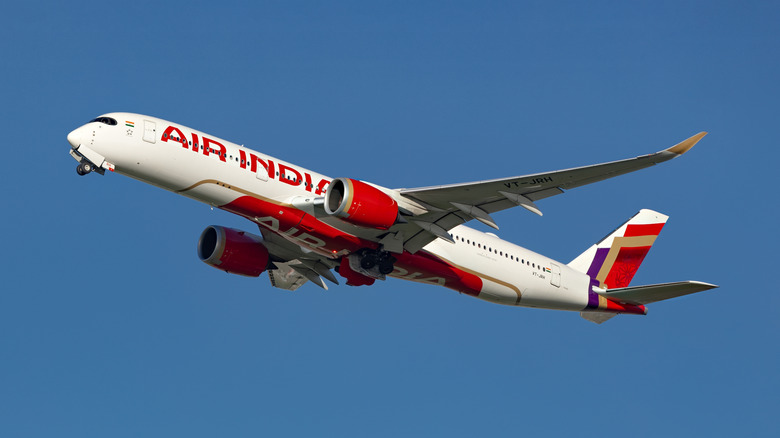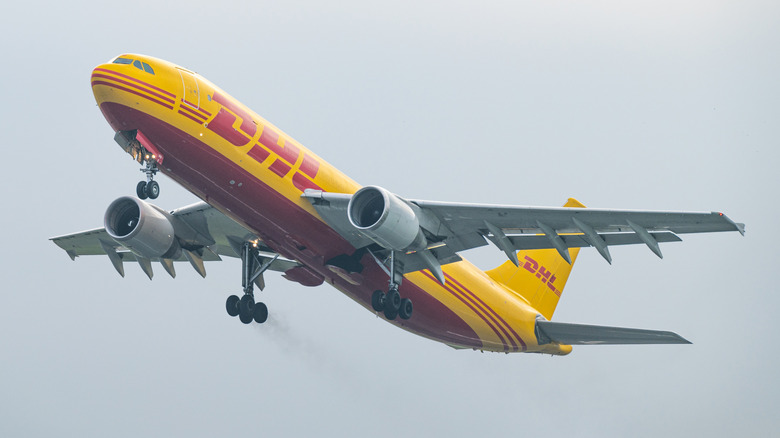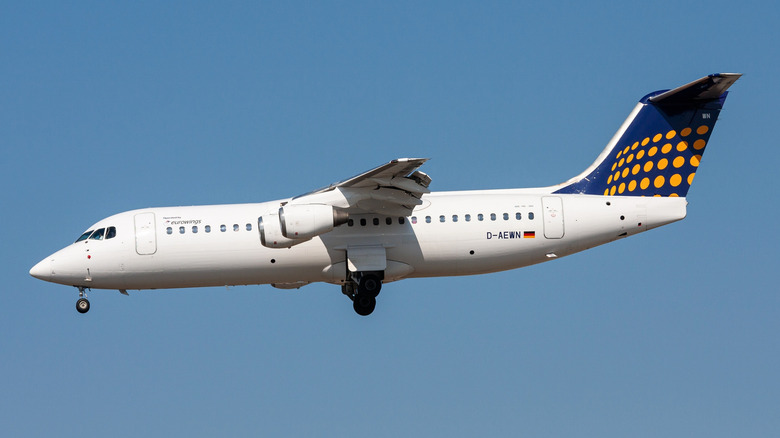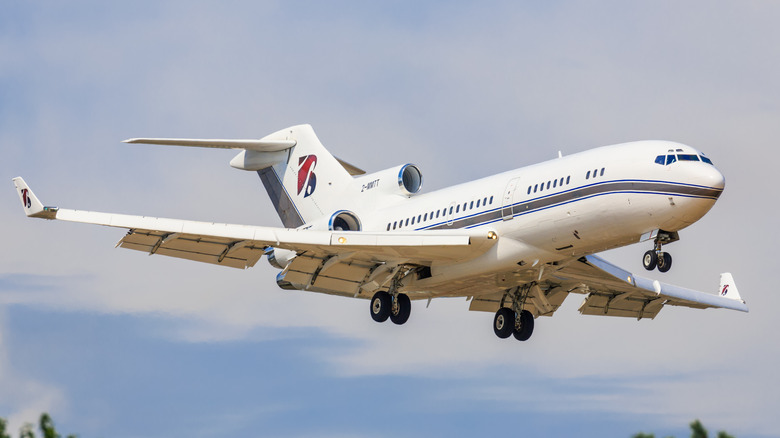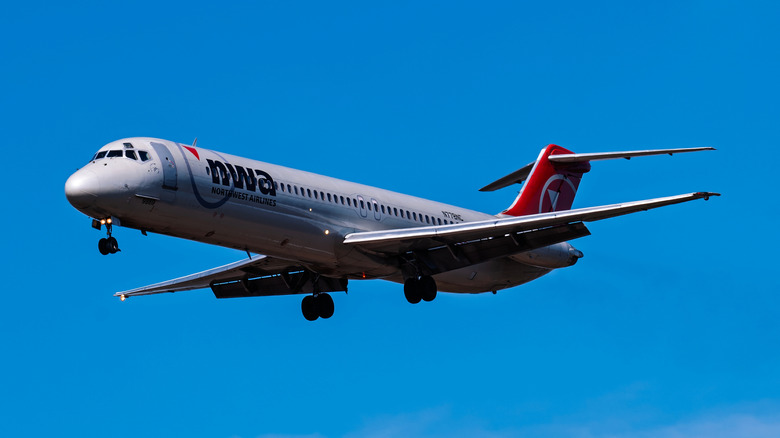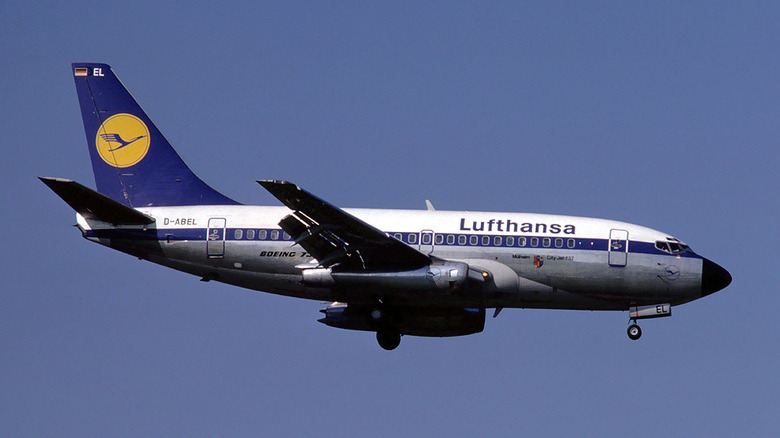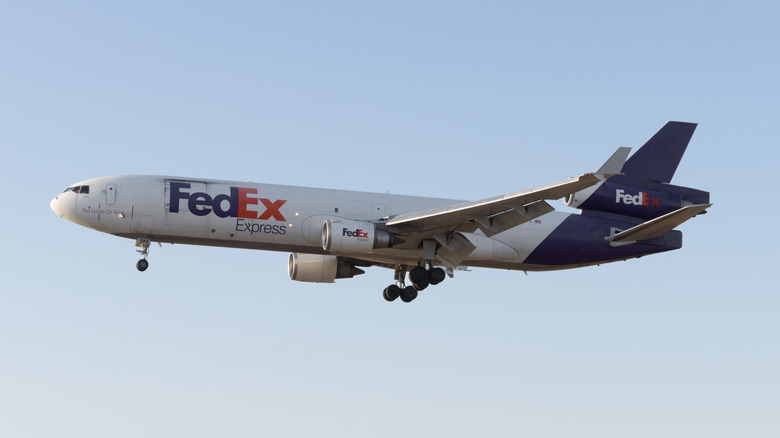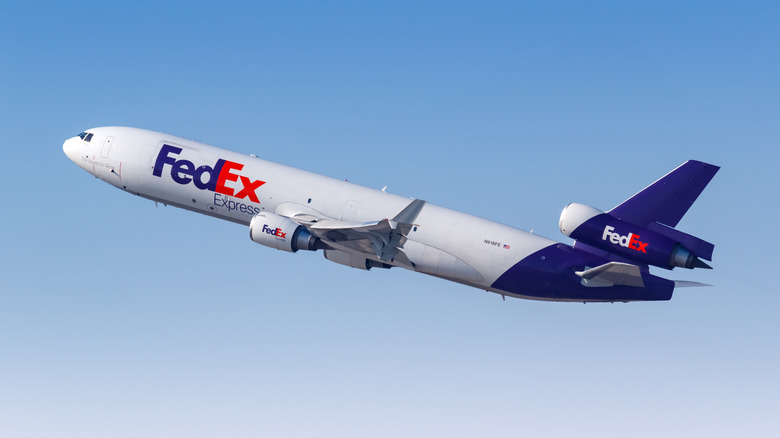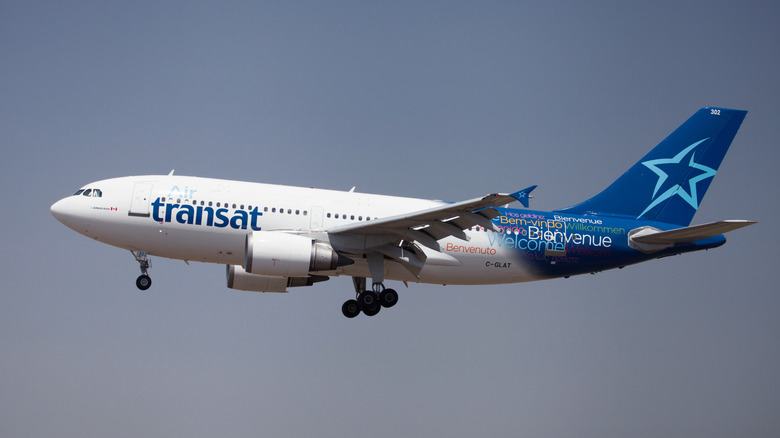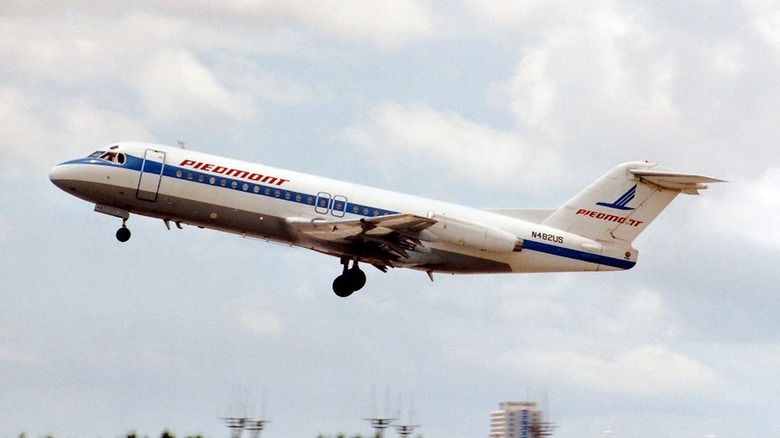10 Passenger Jets With The Worst Safety Records
The airline industry set a new record for the highest full-year traffic with over 40 million scheduled flights in 2024, marking a 10.4% increase compared to 2023. The numbers also highlight how quickly the industry has rebounded post-pandemic. Airplanes remain not only the safest mode of travel but also among the fastest, helping passengers save valuable time.
The International Air Transport Association (IATA) tracks various air travel metrics, including the number of airplane accidents each year. According to IATA, the five-year average (2020-2024) has dialed down to one accident per 810,000 flights, compared to one per 456,000 flights from 2011 to 2015. This shows that while aviation safety has significantly improved, airplanes are not immune to accidents. Some aircraft go their entire lives without a major safety incident, while others have become famous for recurring safety issues.
Boeing, one of the world's largest aerospace manufacturers, has been publishing an annual aircraft safety report for decades. The report compiles data on all commercial airline incidents and accidents dating back to 1959. This article is based on Boeing's official data and presents a list of the 10 passenger jets with the worst safety records, ranked in ascending order based on the hull loss with fatalities rate. The hull loss with fatalities rate is an aviation metric that reflects how frequently a plane was destroyed in a crash involving one or more deaths per one million flights.
Airbus A350
The Airbus A350's lightweight body, cruising speed of 561 mph, range of 9,781 miles, and maximum seating capacity of 300 to 350 passengers make it one of the best planes for long-haul international flights. The first Airbus A350 flight took off and landed at Toulouse-Blagnac Airport in France on 14 June 2013, and Qatar Airways became its first customer.
Powering the Airbus A350 was the Rolls-Royce Trent XWB engine, which is regarded as the world's most efficient large aero-engine. As of 2025, the Airbus A350 remains in active service and continues to be adopted by major airlines such as Emirates and Swiss, both of which have expanded their fleets with more A350s to cover more destinations. The A350 is quite popular among global airline companies because of its lower carbon footprint compared to older aircraft models.
The Airbus A350 is regarded as one of the safest and most advanced modern-day aircraft in the world. To date, the Airbus A350 has been involved in only one fatal accident. On January 2, 2024, a Japan Airlines Airbus A350-900 collided with a Japanese Coast Guard De Havilland Canada Dash 8 at Haneda Airport, Tokyo, resulting in the death of five out of six crew members onboard the DHC-8. This gives it a hull loss with fatalities accident rate of 0.59 according to Boeing, one of the lowest in commercial aviation history.
Airbus A300
In the mid-1960s, American airline manufacturers dominated the global aviation market with a 90% share. In contrast, European companies held only 10% of the shares. To challenge the status quo, France, Germany, and the United Kingdom came together in 1967 to build a serious competitor in the jet passenger plane space. Rolls-Royce was tasked with supplying the engines, and the project eventually evolved into the development of a wide-body aircraft with a seating capacity of 270 to 300, which led to the name A300.
The A300 came to fruition in 1972 as the first twin-engine wide-body commercial aircraft. Its lightweight construction, improved fuel efficiency, and dual-capability to transport both passengers and cargo boosted airline profitability per flight. Its innovative design and operational efficiency quickly earned the Airbus A300 widespread popularity. On 28 October 2022, Airbus A300 celebrated the 50th anniversary of its maiden flight.
However, despite its success, the A300 family has been a part of numerous accidents. One of the notable ones was China Airlines Flight 140, when an Airbus A300B crashed due to a loss of control, killing 249 passengers and 15 crew members. According to Boeing's official data, Airbus A300 has a hull loss with fatalities accident rate of 0.63 per million passengers.
British Aerospace 146 and Avro RJ-70/-85/-100
The British Aerospace (BAe) 146 and the Avro RJ-70/-85/-100 belong to the same aircraft family. The BAe 146-100 was a T-tail regional airliner powered by four Textron Lycoming ALF 502R turbofan engines, with two sitting beneath each wing. Although its design differed from most available commercial jets, its low-maintenance and low operating costs made it arguably Britain's most successful jet program. The BAe 146's quiet operation earned its marketing nickname, the Whisperjet.
Development of the aircraft began in August 1973 under Hawker Siddeley Aviation. However, a worsening economic recession in the U.K. halted production. The production was revived in July 1978 under the newly created British Aerospace, and the BAe 146 completed its maiden flight on September 3, 1981.
The Avro RJ series was later introduced as an upgraded version of the BAe 146 family, and included three fuselage length variants: RJ70, RJ85, and RJ100. The RJ85 was the first one to fly among its family in 1992. Due to low demand, only 12 units of the RJ70 were sold. The RJ models featured improvements such as more efficient AlliedSignal LF-507 engines with FADEC (Full Authority Digital Engine Control), a modernized cockpit, and updated interiors compared to the BAe 146-100.
The BAe 146 and Avro RJ series have a 0.66 hull loss with fatalities accident rate per million departures, per Boeing's official data. The BAe 146 has been involved in multiple high-fatality accidents, with the worst being the 1993 crash at the Yinchuan Airport claiming 55 lives.
Boeing 727
After producing America's first jet airliner, the Boeing 707, and setting a global benchmark in international aviation at the time, Boeing recognized the need for smaller aircraft capable of serving smaller regional airports. In response, the company introduced the Boeing 727 in 1963.
The Boeing 727 featured a similar cockpit and fuselage design to similar to the 707 but had a narrower body and was powered by three Pratt & Whitney JT8D engines, making it one of the biggest trijets in aviation history. The Boeing 727 etched a name for itself in Boeing's legacy and the broader history of commercial aviation by becoming the world's most-produced commercial jet airliner for over a decade.
It became the mainstay for airlines seeking efficient, short-range passenger jets, thanks to its fuel efficiency and the ability to operate at runways as short as 4,500 feet. The aircraft had a seating capacity of 131 passengers, a range of 3,106 miles, and a maximum cruising speed of 596 mph. In 1967, a stretched variant, 727-200, was introduced in response to airlines' demands for increased passenger capacity. After 22 years of service, the production of Boeing 727 was discontinued in 1984.
One of the worst accidents involving the Boeing 727 occurred on March 31, 1986, when Mexicana Flight 940 caught fire mid-air and crashed near Las Mesas, Mexico. This resulted in the death of all 167 passengers and crew onboard. Per Boeing's data, the 727 has a hull loss with fatalities accident rate of 0.72 per million departures.
McDonnell Douglas DC-9
The Boeing 717 is the smallest aircraft in the company's lineup –- even smaller than the 737 Max 7 –- which may be because it wasn't originally a Boeing product. The 717 was based on the DC-9, which entered commercial service with Delta Air Lines in 1965 as a short-range airliner with an all-new design to complement the much larger DC-8.
The DC-9 was powered by two Pratt & Whitney JT8D-5 turbofan engines and had a maximum cruising speed of 561 mph with a range of 655 miles with a full payload. The final DC-9 rolled off the production line in 1982, after which it was succeeded by the MD-80 series. Thanks to its short-field capabilities, the DC-9 connected smaller cities with major metropolitan hubs and helped expand access to commercial air travel across smaller regions. While it remains an influential passenger jet in aviation history, the DC-9 has also gained notoriety for its involvement in several aviation accidents.
One of the worst was the 1969 mid-air collision between Allegheny Airlines DC-9 Flight 853 and a Piper PA-28 Cherokee near Fairland, Indiana, which resulted in 83 deaths. DC-9 has a hull-loss with fatalities accident rate of 0.77 per million departures in Boeing's Statistical Summary of Commercial Jet Airplane Accidents (1959–2024), placing it among the passenger jets with the worst safety records.
Boeing 737-100/200
The Boeing 737 is one of the best Boeing jets, with the 737-100 and 737-200 forming the foundation of what would become the world's most successful jet airliner family.
The first Boeing 737-100 made its maiden flight in 1967 and entered service with Lufthansa in February 1968. Originally developed as a short-range, small-capacity jet seating between 60 to 85 passengers, it shared many components with the Boeing 727, which made it easier for pilots to maneuver either aircraft without a steep learning curve. The 737-200, which also made its first flight and went into service in 1967, surpassed the shorter 737-100 in sales and was in production until 1988.
The 737 family has completed over 231 million flights, traveled more than 170 billion miles, and circled the globe an estimated 6.8 million times. Since its inception, the Boeing 737 family has had 13 variants, including the military and Max Jet versions. Each variant offers different sizes, features, and weight capacities. The original Boeing 737 was 94 feet long, could reach a maximum speed of 585 mph with 85 passengers onboard, and had a range of 1,774 miles.
Despite being an icon of the sky, the history of the Boeing 737 has been marred by several serious accidents, prompting some major U.S. airlines to drop it from their passenger jet fleets. Among the most infamous incidents were the deadly crashes in Indonesia and Ethiopia in 2018 and 2019. Both incidents resulted in the death of all passengers and crew on board. According to Boeing's data, the 737-100/200 has a 0.87 hull loss with fatalities accident rate per million departures.
McDonnell Douglas DC-10/Boeing MD-10
The McDonnell Douglas DC-10 –- later rebranded as Boeing MD-10 -– was developed to serve smaller airports. Following the success of the DC-8 passenger jet, McDonnell Douglas sought to modernize its fleet by creating an aircraft that could fit a larger number of passengers, while still being suitable for a wider range of airports. The result was the DC-10, a wide-body trijet that began service in the early 1970s. After production ended in 1989, Boeing upgraded several DC-10s with an Advanced Common Flightdeck and modern technology, rebranding them as MD-10.
The MD-10 shared a similar cockpit setup with the MD-11, enabling pilots to operate both aircraft with minimal additional training. The original DC-10 was powered by General Electric CF6-6D turbofans, delivering a maximum speed of 610 mph and a range of 7,490 miles without payload. Although the DC-10 has a troubled safety record, it is considered one of the best aircraft of the trijet era.
One of the tragic incidents involving a DC-10 was America's deadliest plane crash – American Airlines Flight 191. Shortly after takeoff from Chicago O'Hare International Airport, the aircraft's engine detached, causing the plane to crash just 30 seconds after becoming airborne. All 271 passengers and crew on board were killed, along with two ground staff.
Despite improvements and efforts to scrape away its tarnished history, the DC-10/MD-10 remains among the commercial jets with one of the worst safety records. According to Boeing's official data, it has a hull loss with fatalities accident rate of 1.28 per million departures.
McDonnell Douglas MD-11
The MD-11 was developed as an upgraded version of the McDonnell Douglas DC-10 jet. Its first flight, which followed two years of research and development, took place in January 1990. Today, its major operators include FedEx Express, UPS Airlines, and Western Global Airlines. The McDonnell Douglas MD-11 was offered with two engine options – a three advanced turbofan Pratt & Whitney PW4460 engine model and a two General Electric CF6-80C2D1F turbofan.
The McDonnell Douglas MD-11 was more modern than the DC-10, featuring a glass cockpit with a six-screen EFIS flight deck that could be operated by two pilots instead of the three required on earlier models. It also introduced a new cabin interior. The aircraft came in different variants, including the standard MD-11, MD-11ER (Extended Range), and MD-11F (Freighter). The standard MD-11 could achieve a maximum cruising speed of 587 mph and a range of 7,843 miles with 298 passengers on board.
While the MD-11 has been involved in numerous accidents, the most notable one was the crash of a Swissair MD-11 near Halifax, Canada, on September 2, 1998. The aircraft plunged into the sea following an onboard electrical system failure, tragically killing all 229 passengers. As per Boeing's official data, the MD-11 has a hull loss with fatalities accident rate of 1.56 per million departures, placing it third among passenger jets with the worst safety records.
Airbus A310
One of Airbus's earliest commercial aircraft, the Airbus 310, is often considered a jet ahead of its time. Its maiden flight took place in 1982, and the Airbus A310-200 entered service with Lufthansa and Swissair in 1983. Based on the Airbus A300, the Airbus A310 was offered in two variants: A310-200 and A310-300. The A310-200 was designed for shorter routes, with a maximum cruising speed of 557 mph, and an impressive range of 4,225 miles while carrying 218 passengers, baggage, and reserves. The A310 gained popularity for its versatility, serving effectively as both a cargo and passenger aircraft.
The Airbus A310 had a maximum passenger capacity of 280. The A310-300 offered a longer range at 4,959 miles, making it suitable for long-haul flights. Production ceased in 1998, and the Airbus A310-300 with registration CS-TGV was the final model to serve in the scheduled European service. Unfortunately, Airbus A310 has been involved in several serious accidents. One of the worst occurred on January 30, 2000, when Kenya Airways flight 431, an Airbus A310, crashed into the sea. shortly after takeoff from Abidjan Airport in Ivory Coast, resulting in 169 fatalities and 10 survivors.
Due to its history of multiple major accidents, the Airbus A310 holds the second-worst safety record among passenger jets, with a hull loss with fatalities accident rate of 1.89 per million departures according to Boeing's Statistical Summary of Commercial Jet Airplane Accidents (1959-2024) data.
Fokker F-28 Fellowship
In the early 1960s, Dutch aircraft manufacturer Fokker began planning an upgraded aircraft to complement the Fokker F-27 Friendship turboprop plane, which had been in service since 1958. Through extensive market research, Fokker identified a demand for a higher-performance, larger-capacity aircraft than the F-27. Development of the F-28 Fellowship began in 1960, and the first details of the new passenger jet were revealed in April 1962 at the Hannover Air Show. It was specifically designed to operate from smaller regional airports and handle short-haul flights.
The Fokker F-28 Fellowship was powered by two Rolls-Royce Spey gas jet engines and featured a speedbrake –- more commonly found in military aircraft –- which allowed F-28 to descend rapidly. The final production models, the 3000 and the 4000, had a maximum cruising speed of 523 mph, with seating capacities of 65 and 85 passengers. Although production ended in 1987, a few Fokker F-28s are still in use by the Argentine Air Force. The Fokker F-28's worst accident was the 1981 crash near Moerdijk, the Netherlands, which killed all 17 passengers on board.
According to Boeing's latest Statistical Summary of Commercial Jet Airplane Accidents (1959-2024), the Fokker F-28 Fellowship holds the worst safety record among passenger jets with a hull loss with fatalities accident rate of 2.31 per million departures.
